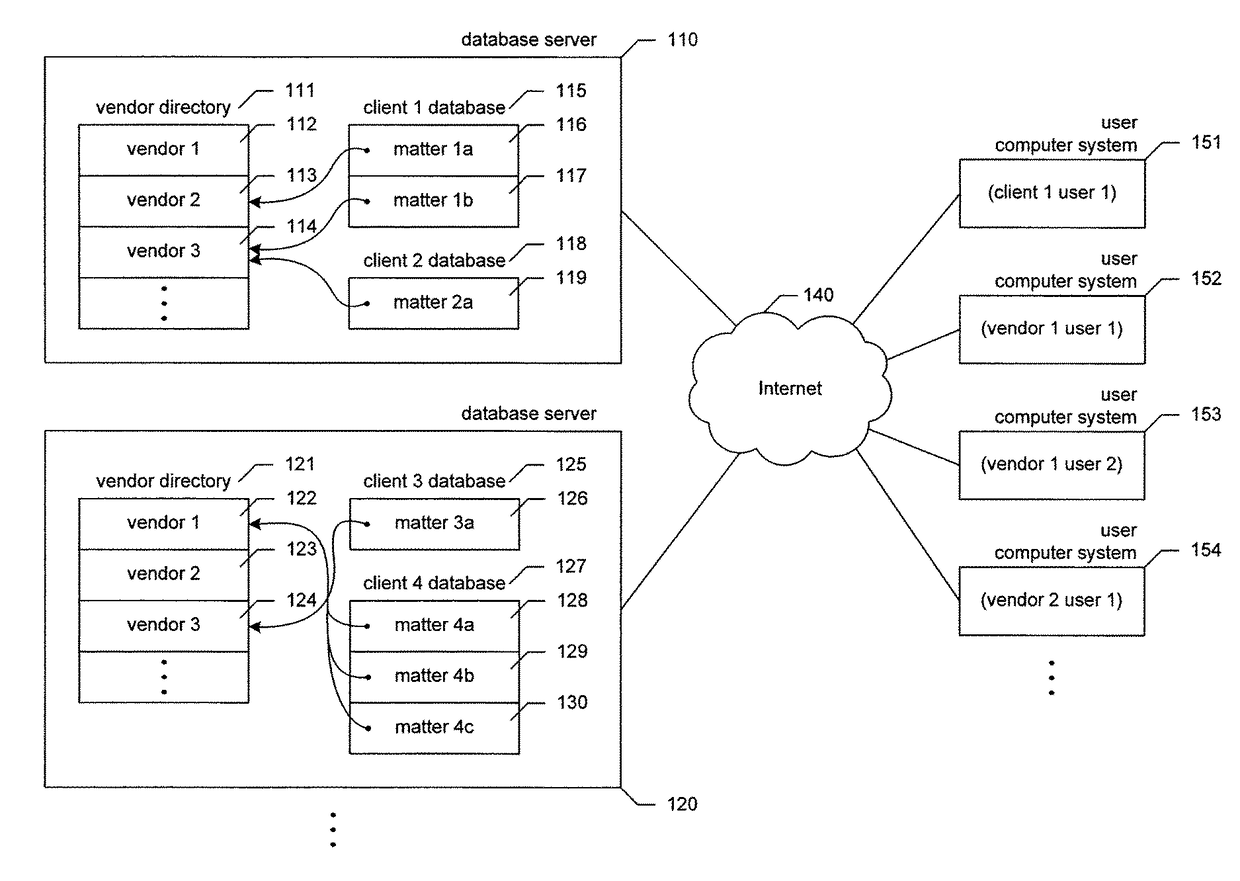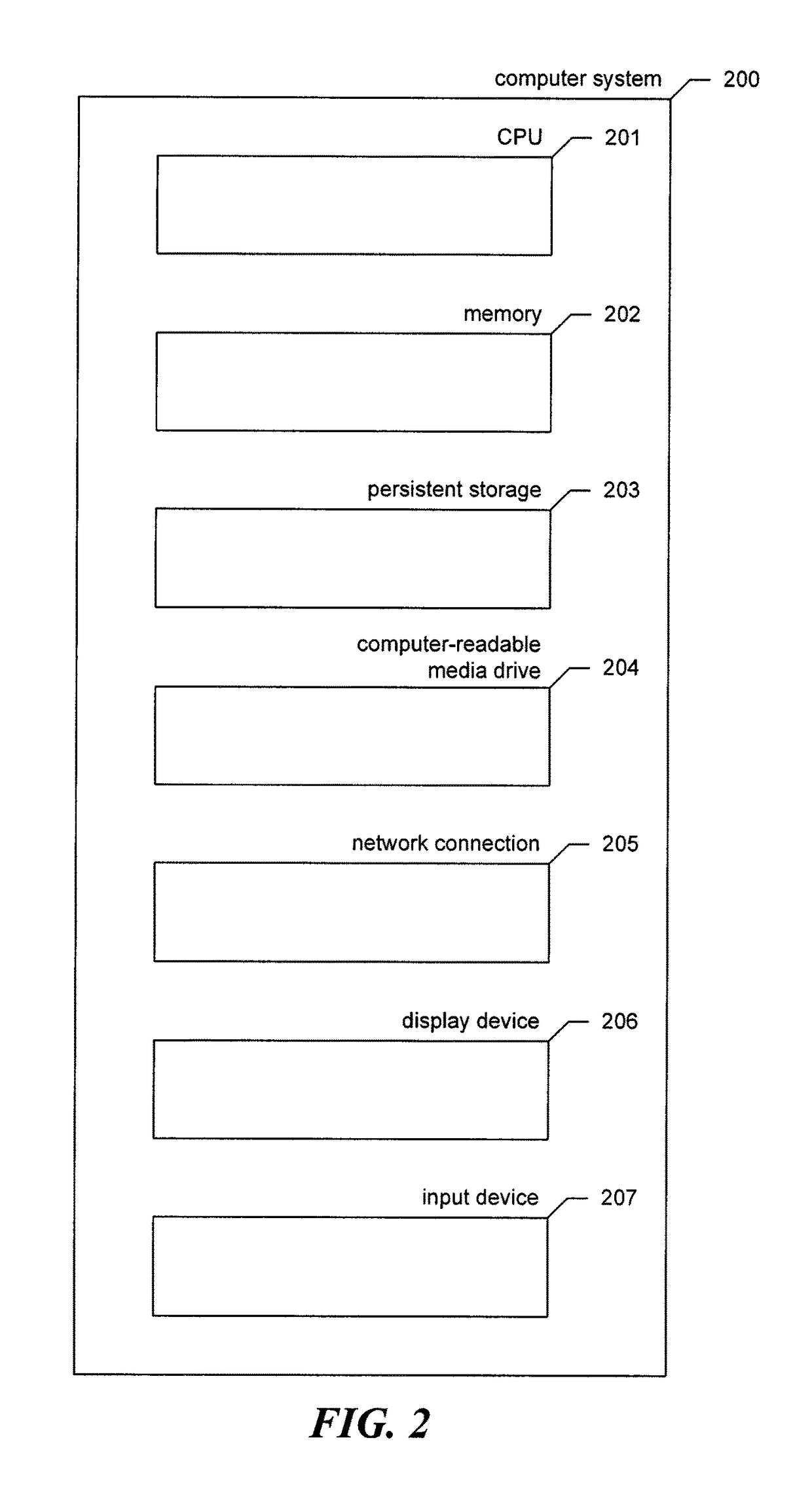Vendor/client information system architecture
a technology of information system architecture and client, applied in the field of vendor/client information system architecture, can solve the problems of inconvenient merging of this vendor with another vendor, inconvenient manual effort, and redundant entry
- Summary
- Abstract
- Description
- Claims
- Application Information
AI Technical Summary
Benefits of technology
Problems solved by technology
Method used
Image
Examples
Embodiment Construction
[0044]A software and / or hardware facility for storing and presenting data relating to work done for clients by vendors (“the facility”) is described. In some embodiments, the facility is incorporated as part of an ASP service used predominantly by vendors of a certain type—such as law firms—to submit bills to their clients, establish budgets and schedules, maintain status information, provide estimates and predictions of likely results, etc. In some embodiments, the facility stores certain information about vendors in a vendor directory that is separate from information about clients. For example, a vendor directory may contain, for each vendor, information about the vendor's name, locations, personnel, and users of the service. This vendor directory information is stored separately from client information, such as information identifying and describing clients and their matters, and the matters': cost estimates, schedules, predicted outcomes, billing and payment history, associated...
PUM
 Login to View More
Login to View More Abstract
Description
Claims
Application Information
 Login to View More
Login to View More - R&D
- Intellectual Property
- Life Sciences
- Materials
- Tech Scout
- Unparalleled Data Quality
- Higher Quality Content
- 60% Fewer Hallucinations
Browse by: Latest US Patents, China's latest patents, Technical Efficacy Thesaurus, Application Domain, Technology Topic, Popular Technical Reports.
© 2025 PatSnap. All rights reserved.Legal|Privacy policy|Modern Slavery Act Transparency Statement|Sitemap|About US| Contact US: help@patsnap.com



